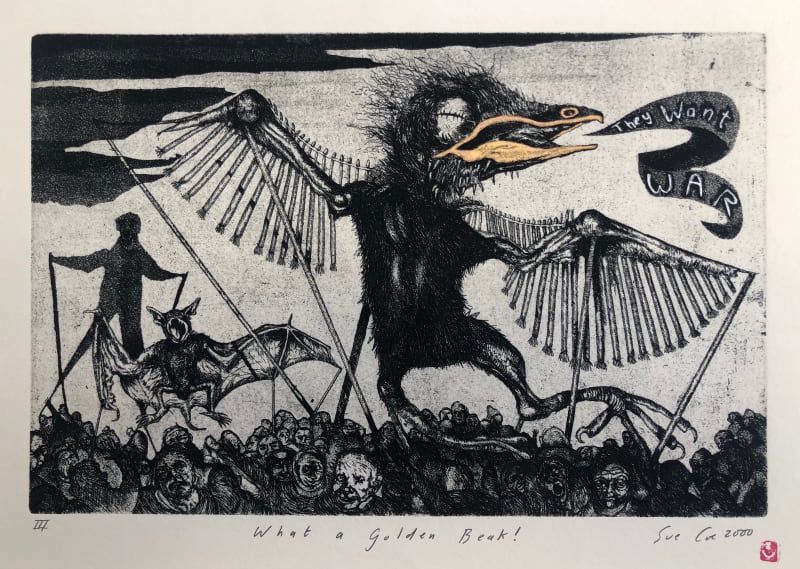Artist statement:
This series started for me, when I was observing a bluebird's nest. The parents built the nest, and then took it in turns sitting on the eggs, four blue eggs. Bluebirds are quite rare now, as they eat squirming insects off the ground, and these are the insects most prone to Round Up, or other pesticides, which in turn kills the bluebirds. After the eggs hatched, the parents worked from dawn to dusk feeding the babies. I watched as they started to grow blue pin feathers, and became almost too big to fit into the nest. One morning I watched, and there was silence and no adult bluebirds tending the nest. It was too early for them to have fledged, so with a feeling of sadness, I looked inside the nesting box, and all the bluebirds had their throats torn out. None had been eaten, just killed. Possibly a ferret, or vole? It seemed inexplicable to me that animals would kill for no purpose, and then I remembered the Human Animal. I took one of the bodies of the chicks, and drew it, and then made the etching 'What a Golden Beak, they want war'. The merging of Goya and the innocent baby bird became the basis for the war series. It was an attempt to update Goya's brilliant etchings, Disasters of War. In his time it was impossible for the people, to ignore the devastation of war, but in our culture it not only desirable to deny the disaster of war, but it is enforced by the corporate media. Men who have avoided wars by their wealth and privilege send others to fight their battles. War creates the profits they crave, and the chaos and fear to control populations. My favorites of this series, are The Forgotten (the prison scene) where the plate for the etching was rolled over by vehicles, and generally crushed, and then I drew on the surface of it. Upper and Lower Primates, which turns our assumption of moral superiority of other animals, on its head, War Street the skeletal parade float on the backs of all the people, and They cut off their hands, so they could not vote, which references Rwanda. And the Rape of the Child, one of the biggest weapons of warfare is rape, it destroys entire communities. I like the elegance of the black and white, the deeply etched lines in the copper plates, and the French ink, and all the surprises that come along with etching - that is never entirely in the control of the artist.
–Sue Coe, April 2008
